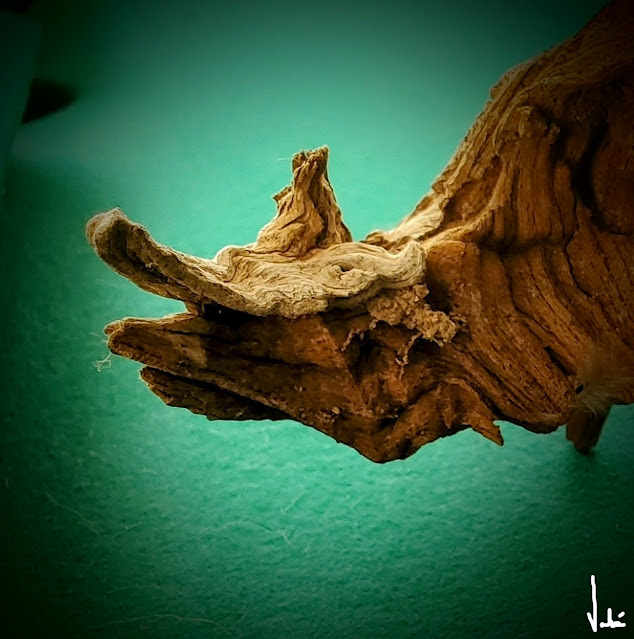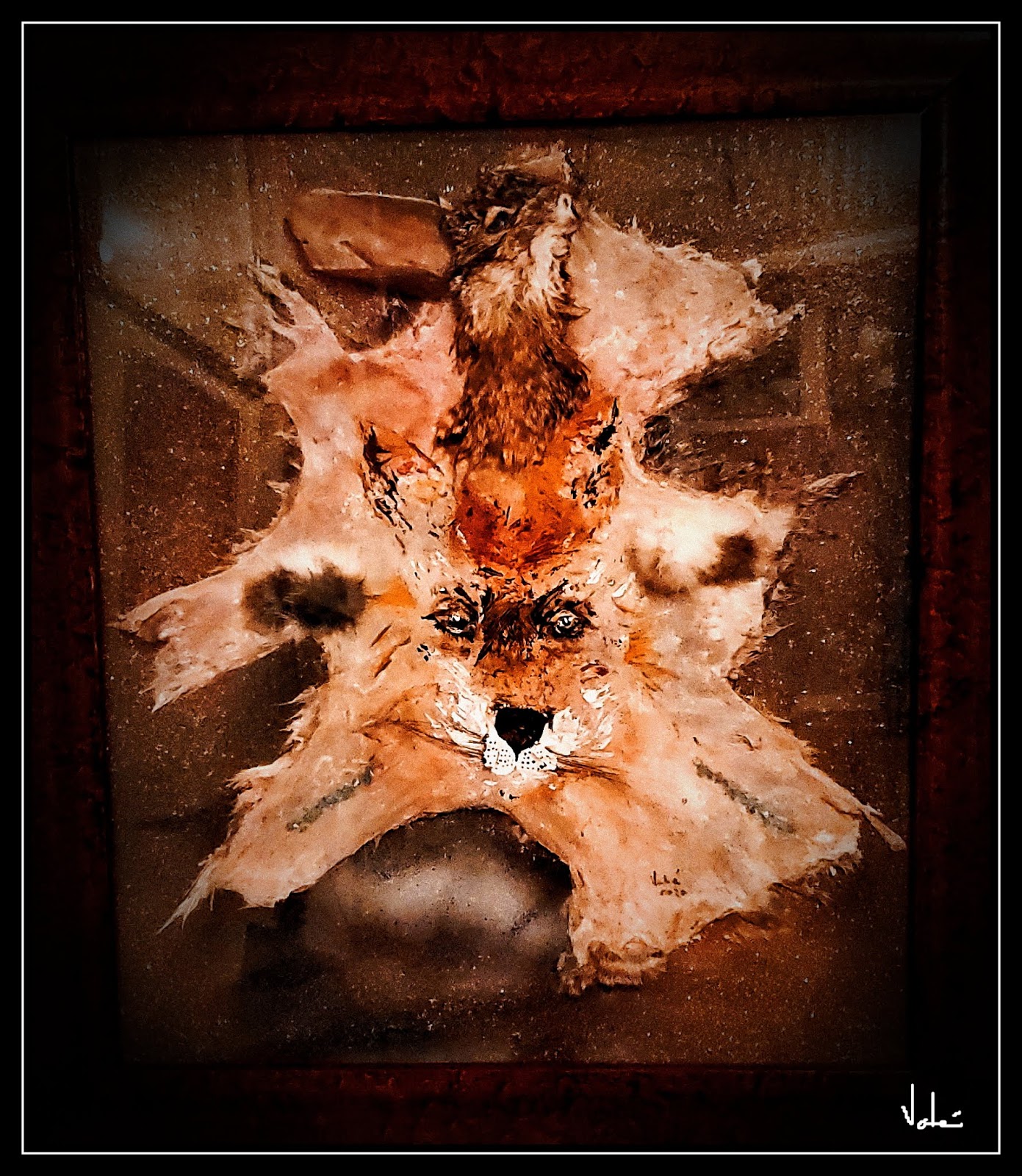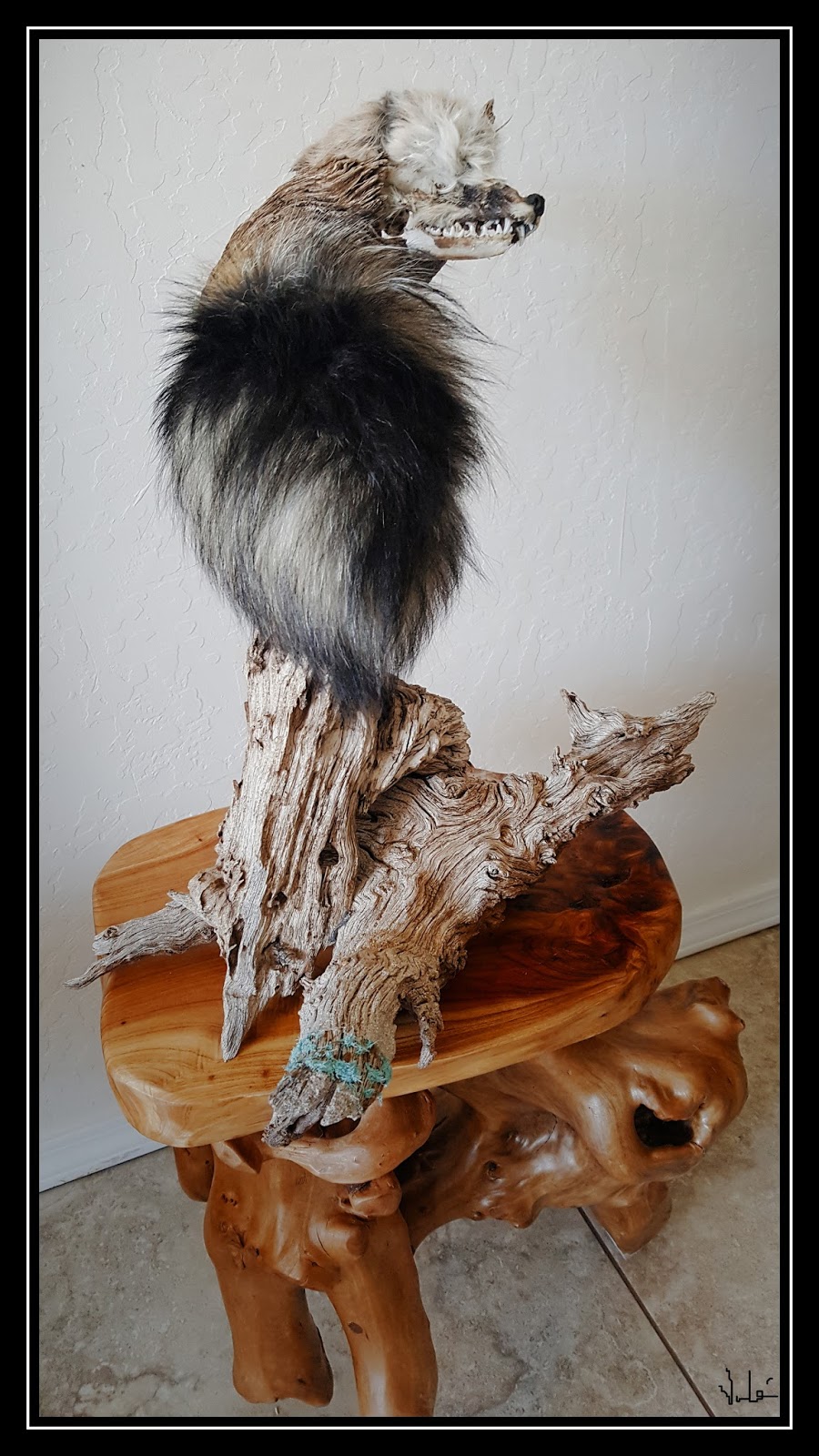Lignum Pisces Deserti: a Grouper Fish Disguised as Petrified Desert Wood
A friend of mine describes my interest in hiking in
the desert as “walking in a place where
one can close his eyes and still see and fell the surrounding with his feet.”
Well, I have enjoyed those walks for more than a decade now and have to admit
that sometimes what I feel with my feet are to be worried about. So, keeping
one’s eyes open can keep you away from snakes, red ants and scorpions, as well
as prevent tripping on a rock.
So I keep my eyes open because I believe that what I
see is quite amazing, since the High Desert of Arizona is not the desert one
finds in Saudi Arabia or Morocco. The trees and brush are home to large and
small animals and birds, and after a few days of rain, parts of that desert
looks like a golf course. Not for long, but I sure enjoy being there after the
heavy rain season and the snow, for about two months a year.
… A few days ago I stumbled on a small petrified
wood piece. When I looked down, I saw a grouper fish looking at me with its
mouth open, its body buried in the sand. I decided to bring it home with me.
Here is what I saw, and I know that for most people
it looks like just a piece of wood:
Yet, what I saw reminded me of a grouper as in this
photo:
How about now? Are the right eye socket and the
“typical” grouper lips more apparent?
If not, perhaps a slight touch up with water colour
would prove that I was not suffering from heat and sun stroke…
Ok, I have to admit that I often use what would soon
turn to dust in the desert for my artistic curiosity and explorations. I see a
shape, texture or “attitude” that my brain immediately translates into an
expression I can amplify or transform. So, I decided to pursue that
transformation into a “desert grouper fish.” In fact, I have attempted this
before, although I ended up with the creation of a new species of fish. (https://vaheark.blogspot.com/2021/05/dicotylederm-erratus-prehistoric-fish.html
)
This time, I wanted to keep things simple, except to
add a dorsal fin using the dried endoskeleton of a dead Prickly Pear cactus,
which is indigenous to the Southwestern desertic and arid areas.
Here is a photo of that cactus:
And one of a dead cactus showing its dried
endoskeleton:
A word about that fibrous structure. First, it is
amazingly delicate yet very strong. It can survive the desert heat, the wind
and the abrasiveness of the moving sand during storms. It is also amazingly intricate
and symmetrical in its shapes making it a natural material local artist use by
dipping segments of the dried endoskeleton in liquid resin and melted silver. I
have seen the most intricate details of the result by Native American jewelers
as pendants and earrings.
Here are a few small pieces of that fibrous skeleton
shown with a portrait photo I made as backdrop, to add an artistic touch:
The finished work is shown at the top of the page
with a small segment of the cactus skeleton as the grouper’s dorsal fin.
My artistic exploration aside photography remain
what I see as “recycling metamorphosis” since I use organic materials to paint
upon or sculpt. What attracts me to such a selection is that any project at its
very start is a collaboration between the materials I use and my interpretation
of what they already are. My painting canvas is a wild desert rabbit or hare
skin not a plain and impersonal man-made perfectly flat and white canvas. I
sculpt using petrified wood and sun-bleached animal skulls I encounter during
my walks, not bronze or clay. In some way, what I see is a akin to a Rorschach ink
blot – it tests my optic and predisposition of the moment and leads to the
transformations I pursue.
And to illustrate the point, as I took pictures of
my desert grouper fish which I now call “Lignum Pisces Deserti “I noticed
that its tail was in the perfect shape of a coyote’s head! Here is that angle
of view showing the coyote’s head with perfect ears, a snout with a pointed nose,
and a half open mouth:
How appropriate for a desert motif!
November 3, 2024
© Vahé A. Kazandjian, 2024












Comments
Post a Comment